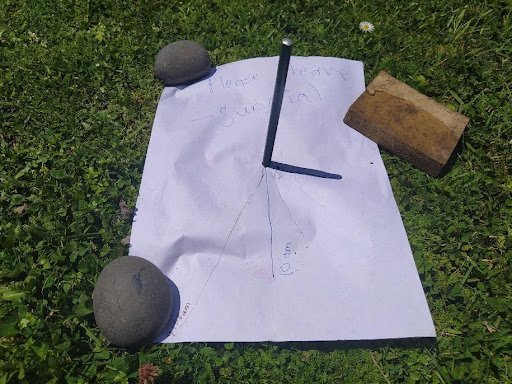Oct 19: Print with Foam or Polystyrene
Print with foam or polystyrene!

Below are some talking points and activities to pass the time, all relating to today’s story.
Talking points
Discuss the ideas presented in the story with your family—at home or over video conferencing. Find ways to involve as many people as possible, especially those who you know are isolated by the lock-down.
- Do you know how to locate Auckland’s two harbours – the Waitemata and the Manukau? Which is on which side of Auckland? Which of these well-known places near the Manukau have you been to or heard of: Auckland Airport, Ambury Farm Park, Butterfly Creek, Rainbow’s End?
- The article talks about the Ōtuataua Stonefields and in the pictures you can see low stone walls. How are these stones, used to partition the land, connected to the volcanic landscape? What else do you know about features of volcanic landscapes – for example the soil?
- What would have been an advantage of pā built on volcanic cones? Can you think of any disadvantages?
- “The volcanic cone of Ōtuatauais an ancestral maunga—a mountain viewed by iwi as both a defining landmark and the physical embodiment of their connection to the land. In the 1950s, it was quarried until nothing but a hole remained.” What does the quarrying of sacred sites show us about the dominant worldview in the 1950s? Do you know of any other volcanic cones that were quarried across Auckland?
- Did you know about the story of Hape, who managed to get to Aotearoa before the others on the Tainui Waka and called to them from the ridge which we now call K’Rd – the road where Hape made his karanga? What would make a good sculpture to commemorate this event, if you were commissioned to create something on K’Rd or a nearby Auckland lookout point?
Activity: Print with Foam or Polystyrene
You will need:
- Foam or similar packing materials
- Paint and paintbrush
- Scissors
- Paper or card to print on
- Scrap paper for practicing
- Newspaper to lay under your work

Step One: Look through your cupboards and recycling/rubbish bins for any scraps of foam that might work to make a print with. Try cutting any foam that can be easily cut, to make simple shapes. Other items such as bottle corks or old cotton spools also work well.

Step Two: Coat one side of each scrap with paint and press it firmly onto paper to see what shape print it makes. Play around with different scraps until you find some you could use to make a picture with.

Step Three: Print repeatedly with your scrap blocks, re-applying paint as you need to, to create a picture. You could try printing a picture of a stone wall in a field, like this one.
















